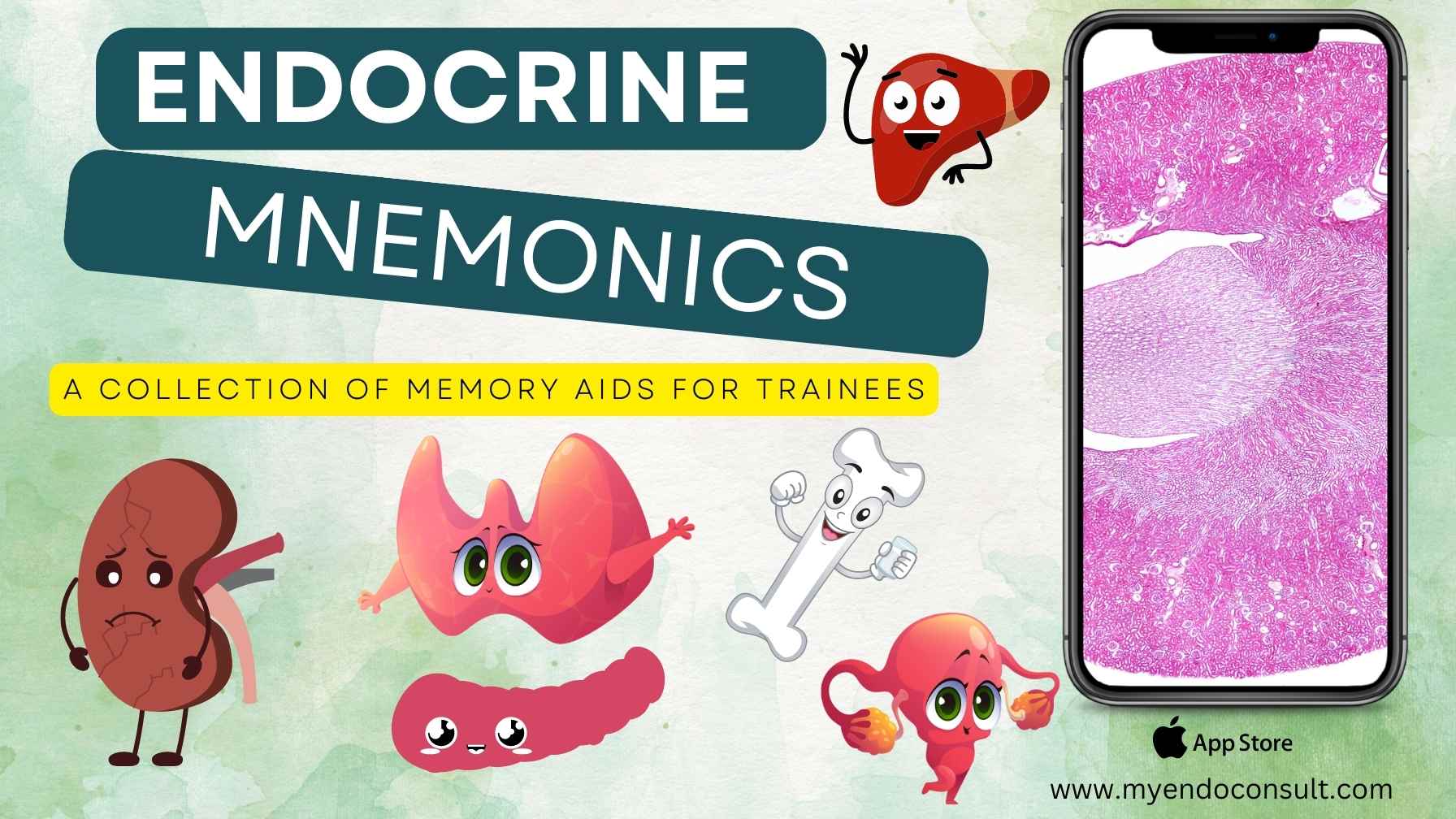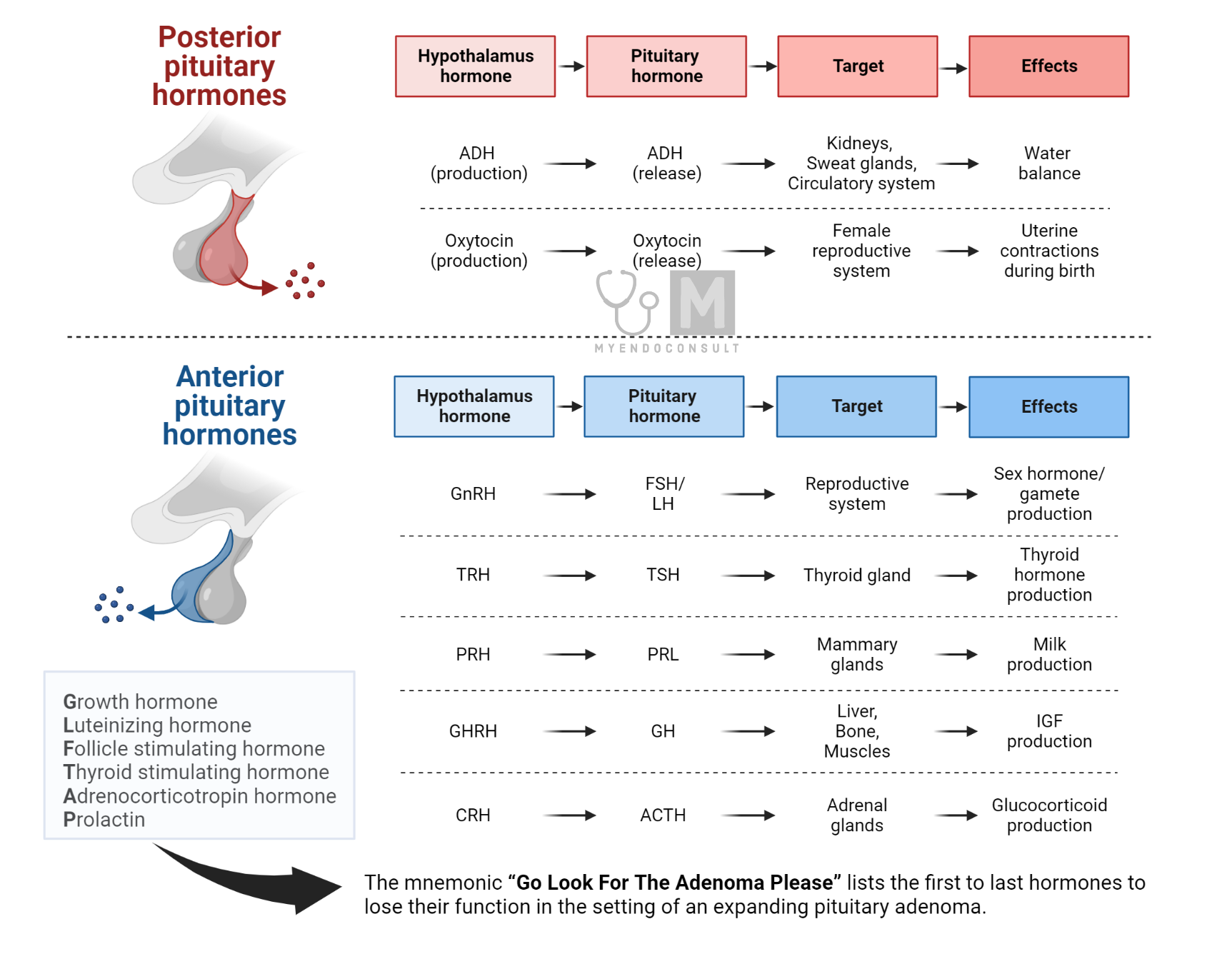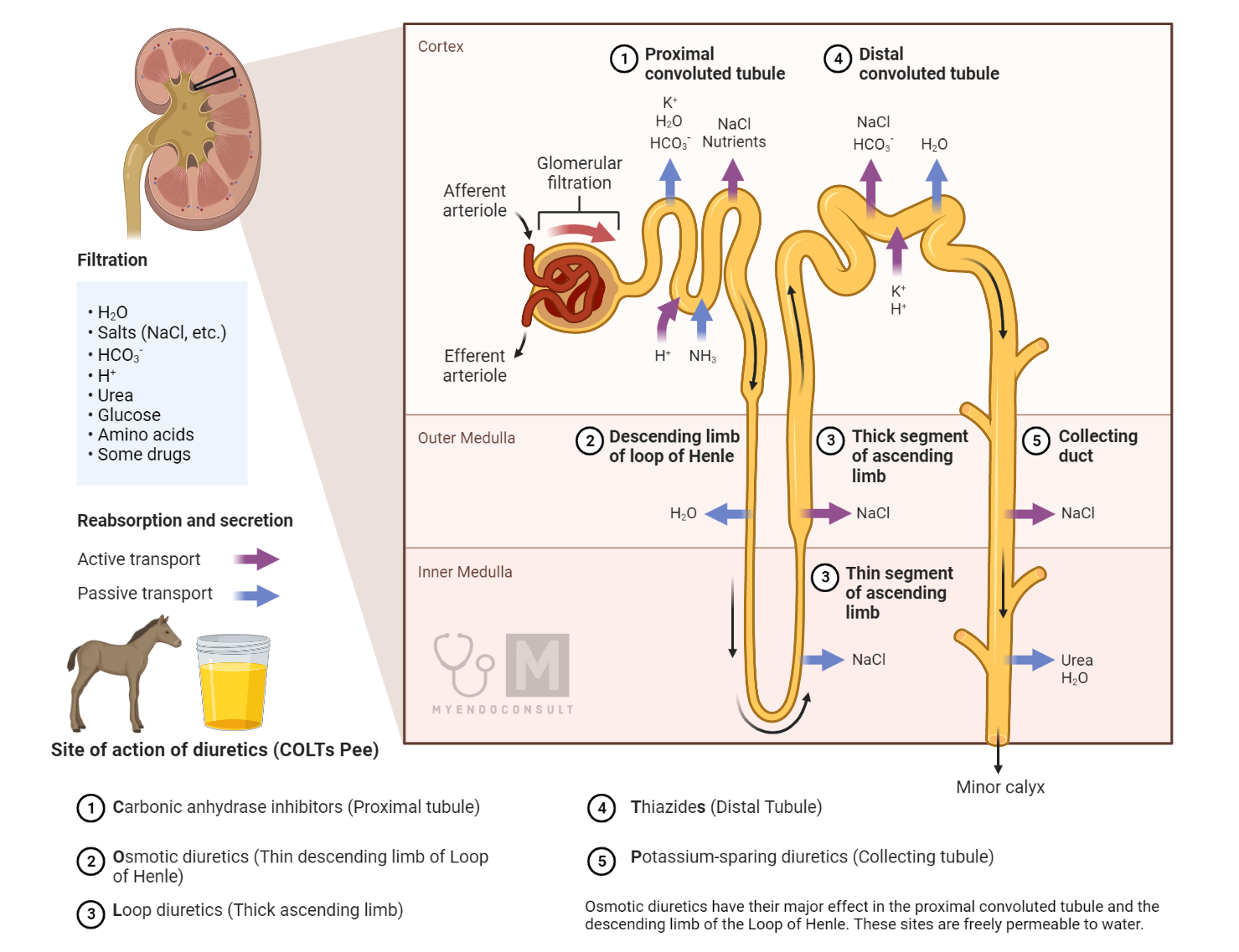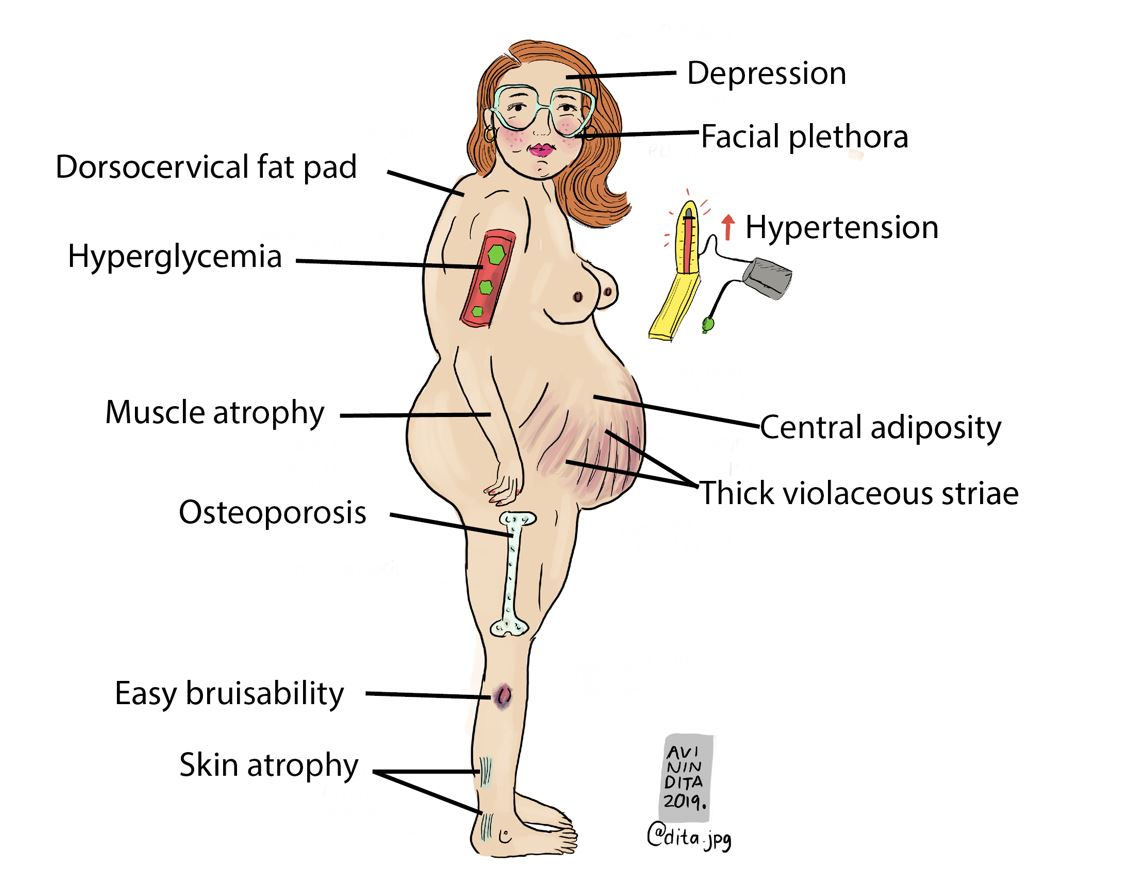
A collection of highly effective hormone (endocrinology) mnemonics to help you remember essential clinical pearls. There are a few things you can do to help memorize hormones. First, try to find a mnemonic device that will help you remember the hormone and its function.
Second, make sure you understand the role of the hormone in the body and how it affects other systems.
Finally, practice recalling information about the hormone by writing it down or testing yourself with flashcards. If you can master these three steps, you should be able to effectively memorize hormones.
What is a mnemonic device?
A mnemonic device is a memory aid that can help you remember information. There are many different types of mnemonic devices, but some common examples include acronyms, rhymes, and visual aids.
When choosing a mnemonic device, it is important to select one that will work well for you and the specific information you are trying to remember. For example, if you are trying to memorize the names of various hormones, an acronym might be more helpful than a visual aid.
What is the role of hormones in the body?
Hormones play an important role in regulating many different bodily processes, including growth, metabolism, and reproduction. Because of their widespread effects, hormones must be carefully balanced in the body.
When one hormone is out of balance, it can cause a domino effect that leads to other hormone imbalances and health problems. For this reason, it is important to have a basic understanding of how hormones work before trying to memorize them.
How can I practice recalling information about hormones?
One way to practice recalling information about hormones is to write down what you know. This can be done in the form of a list, mind map, or even just bullet points. Once you have written down everything you know, try testing yourself by covering up the information and seeing how much you can remember without looking.
You can also make flashcards with key information about each hormone on one side and practice quizzing yourself. Finally, find real-world examples of hormone imbalances and how they can affect the body. This will help you better understand the role of hormones and how they work.

Pituitary Adenoma (Go Look For The Adenoma Please)
What is the sequence of loss of pituitary function in patients with an expanding sellar mass? The mnemonic “Go Look For The Adenoma Please” lists the first to last hormones to lose their function in the setting of an expanding pituitary adenoma.
Growth hormone
Luteinizing hormone
Follicle stimulating hormone
Thyroid stimulating hormone
Adrenocorticotropin hormone
Prolactin
Pheochromocytomas (The 10 percent Rule)
A USMLE memory aid for the clinical features of pheochromocytoma
- 10% familial
- 10% malignant
- 10% extra-adrenal
More recent evidence points to a genetic cause of pheochromocytomas in up to 30% of patients. This mnemonic provides an understanding of the general behavior of these tumors.
Pheochromocytomas (8Ps of presentation)
- Pallor (NOT flushing)
- Perspiration
- Panic
- Pain (headache)
- Postural dizziness
- Panic attack
- Palpitations
- Paradoxical hypertension in the setting of beta-receptor blockers
Insulinoma mnemonic
Insulinoma (rule of 10s)
- 10% malignant
- 10% are multifocal
- 10% are due to multiple endocrine neoplasia type 1
- 10% are ectopic
Insulinomas are usually unifocal and benign
Causes of Addison’s disease (ADDISON)
Addison’s disease mnemonic illustrating the causes of primary adrenal insufficiency
- Autoimmune Adrenalitis (Primary adrenal insufficiency)
- Drugs (inhibitors of steroidogenesis, ketoconazole, mitotane)
- Diffuse amyloid deposition (amyloidosis)
- Infectious agents (tuberculosis, Human Immunodeficiency Virus)
- Secondary causes (hypopituitarism)
- Other causes ( adrenal hemorrhage)
- Neoplasia (usually metastases from primary tumors in the lung, breast, stomach, kidney, rectosigmoid colon or melanoma)
Causes of Diabetic Ketoacidosis (6 Is)
This memory aid allows the recollection of DKA precipitating factors
- Infection (urinary or respiratory tract infections)
- Insulinopenia (absolute in type 1 diabetes, relative in type 2 diabetes)
- Infarction (silent myocardial infarction)
- Injury (significant trauma or stress)
- Index presentation (newly diagnosed type 1 diabetes)
- Issues of adherence to insulin therapy
Anion Gap Metabolic Acidosis
MUDPILES is a time tested mnemonic for recalling the causes of high anion gap metabolic acidosis.
- Methanol
- Uremia
- Diabetic ketoacidosis
- Propylene Glycol
- Isoniazid
- Lactic Acidosis
- Ethylene Glycol
- Salicylates
Site of action of diuretics (COLTs Pee)
The site of action of diuretics from proximal to distal portions of the nephron can be remembered by the mnemonic COLTs Pee.
Carbonic anhydrase inhibitors (Proximal tubule)
Osmotic diuretics (Loop of Henle)
Loop diuretics (Thick ascending limb)
Thiazides (Distal Tubule)
Potassium-sparing diuretics (Collecting tubule)

Cause of Hypercalcemia (SHIFT in calcium)
A USMLE memory aid for the causes of hypercalcemia
- Sarcoidosis and other granulomatous diseases
- Hyperparathyroidism, Hyperthyroidism, Hypervitaminosis A, and D.
- Immobilization (increased bone resorption)
- Familial (Familial Hypocalciuric Hypercalcemia)
- Tumors, Thiazide diuretics, LiThium
Clinical features of Cushing’s Syndrome (MOON FACIES)
MOON FACIES is a simple mnemonic for Cushing’s syndrome
- Menstrual disorders
- Osteopenia or Osteoporosis
- Obesity (Central distribution of fat)
- Neurosis (depression or psychosis)
- Face (Plethora, hirsutism, acne)
- Altered muscle physiology (proximal muscle weakness)
- Supra-Clavicular and Dorso-Cervical fat pads.
- Infection
- Elevated blood pressure
- Skin (Easy bruisability)

Causes of hypoglycemia, FEELING Dizzy
A mnemonic for hypoglycemia causes
- False hypoglycemia (pseudohypoglycemia not meeting Whipple’s criteria)
- Exogenous (insulin or insulin secretagogue)
- Ethanol
- Liver failure
- Immune dysfunction (stimulating anti-insulin antibodies)
- Neoplastic (Insulinoma or Sarcomas producing IGF-2)
- Glandular dysfunction (Pituitary insufficiency, Adrenal insufficiency)
- Drugs (quinolones, pentamidine, beta-blockers, ACE inhibitors)
Mnemonic for MEN
This is a simple MEN syndrome mnemonic suitable for USMLE board preparation. The 3 Ps of Multiple Endocrine Neoplasia type 1.
Multiple Endocrine Neoplasia type 1 (PPP)
- Pituitary adenoma
- Pancreatic adenoma
- Parathyroid adenoma
Multiple Endocrine Neoplasia type 2A (MPP)
- Pheochromocytoma
- Medullary Thyroid Carcinoma
- Parathyroid adenoma
Multiple Endocrine Neoplasia type 2B (MPM)
- Pheochromocytoma
- Medullary Thyroid Carcinoma
- Mucosal neuromas and a Marfanoid body habitus
Management of Osteoporosis (ABCDE)
- Activity (Weight-bearing exercise)
- Bisphosphonates
- Calcium supplementation
- D (vitamin D supplementation)
- Estrogens (Menopausal Hormone Therapy)
Causes of Gynecomastia (MAKE BREAST)
The gynecomastia mnemonic is MAKE BREAST
- Marijuana
- Alcohol
- Klinefelter syndrome
- Estrogen excess
- Baby (circulating maternal estrogens)
- Receptor blockers (Ketoconazole, calcium channel blockers, H2 Blockers)
- Elderly
- Antineoplastic agents (alkylating agents)
- Spironolactone
- Tumors (adrenal or testicular)
Acute Pancreatitis (I GET SMASHED)
A simple memory device for remembering acute pancreatitis is I GET SMASHED
- Idiopathic
- Gallstones
- Ethanol
- Trauma
- Steroids
- Mumps, Malignancy (Pancreatic cancer)
- Autoimmune
- Scorpion sting
- Hypercalcemia, Hypertriglyceridemia (Usually more than 1000mg/dL)
- ERCP
- Drugs (GLP-1 agonists)
Page [tcb_pagination_current_page] of [tcb_pagination_total_pages]
Kindly Let Us Know If This Was helpful? Thank You!


